You love the muesli from the organic supermarket. You prefer whole-grain bread to white bread. And while you're shopping, you quickly grab a jar of sauce, just in case you're short on time to cook. Which, if you're honest, is always the case. You also use honey to sweeten it, because after all, it's a natural product.
Sugar comes in many different forms and names, and it's likely in most of the products you last put in your shopping cart—whether they were in the healthy aisle or not.
In this blog post, we want to explain everything about sugar, including how to identify it in the supermarket.
What exactly is sugar?
When you think of sugar, the first thing that probably comes to mind is "table sugar" for your coffee, tea or cake.
In fact, there are many different types of sugar, all of which have different effects on our bodies.
The scientific name for table sugar is sucrose. Sucrose is a disaccharide. Disaccharide means that it consists of two simple sugars: glucose and fructose.
When you eat sucrose, the glucose enters your bloodstream and is used for energy. You can see this in the Hello Inside app, as your blood sugar rises. When the energy isn't needed, it's stored in your muscles or as fat.
Before fructose can be used as energy, it must pass through the liver. There, it is then converted into glucose and subsequently into fat. Furthermore, fructose raises blood sugar levels more slowly (less significantly) than glucose.

Does this mean you should avoid eating fruit?
In one word: no.
First, fresh fruit contains much less fructose than many processed foods and beverages. While a can of soda can contain around 40 grams or more of fructose, an apple has only about 6 grams of fructose per 100 grams.
Another important factor is the interaction of the various compounds in food. The fructose in your soda, for example, is free sugar and is therefore absorbed into your blood very quickly. However, if you eat an apple, your body has to break down the apple structure to access the sugar. The fiber in an apple slows digestion, so the fructose is released much more slowly.
Therefore, our tip: Pay particular attention to your sugar sources – i.e. where your sugar comes from.
What are sources of sugar?
Where the sugar you consume comes from is crucial to how it affects your health. As we mentioned earlier, some sugars occur naturally, such as in fruits and dairy products. Some sugars are removed from their original sources and added to foods to increase their sweetness, like the sugar in your soda.
Naturally occurring sugar
Naturally occurring sugars can be found in fruits, vegetables, grains, dairy products, and, in small amounts, nuts. Eating foods that naturally contain sugar is beneficial for your blood sugar because they also contain other nutrients. Plant-based foods, for example, are rich in fiber, minerals, and antioxidants, while dairy products contain calcium and protein.
These foods are generally digested slowly by your body, providing a steady energy supply. They're an important part of a healthy lifestyle. Studies show that eating plenty of vegetables, whole grains, and fruit can reduce the risk of chronic diseases (such as some cancers, diabetes, and heart disease).
Free sugar
Free sugar , or added sugar, on the other hand, is refined sugar that's added to foods. You should avoid this type of sugar as much as possible, or at least reduce it.
Sugar isn't just added to obviously sweet foods like soda, ice cream, or candy. It's also used to preserve food. So, check the labels of your favorite sauces or frozen pizza. You'll be surprised at how many places you'll find sugar.
We recommend always checking the ingredient list carefully when purchasing processed foods to detect hidden sugar. Unfortunately, this isn't always easy, as sugar can be listed under more than 50 different names.
The most effective and easiest way to reduce your sugar intake is to eat mostly whole, unprocessed foods.
The products that have the most added sugar are soft drinks, fruit drinks, flavored yogurts, cereals, cookies, cakes, pastries, candy, and virtually all processed foods.
Why is sugar bad for your health?
As already described above, not all sugar is inherently bad for you. Some sugar is even necessary to provide energy. The problem lies with added sugars. They usually consist of a simple chemical structure of one (monosaccharide) or two (disaccharide) sugars and therefore contain no other nutrients.
The simple chemical structure of sugar makes it an "empty" calorie. This means that while it provides a quick energy boost and raises blood sugar levels, it has no nutritional value.
The energy boost doesn't last long either. As soon as your blood sugar level drops again, you feel sleepy, unfocused, and easily distracted. Research shows that there's a strong link between refined sugar consumption and excessive daytime fatigue.
Frequent consumption of added sugar also increases your hunger and causes you to eat more than you need.
Excessive consumption of added sugar increases the risk of:
- Overweight, obesity and fatty liver
- Type 2 diabetes and other metabolic diseases
- different types of cancer
- caries
In the short term, you may also gain weight, feel unfocused, and tired. High sugar consumption (6+ teaspoons a day) also impairs glucose metabolism and leads to elevated blood sugar levels. This then also affects your sleep and weight.
In the long term, excessive consumption of added sugar can even be addictive.
Added sugar also increases blood pressure and leads to an increased risk of chronic inflammation - both of which are causes of heart disease.
A 15-year study found that people who consume 17-21% of their total calories from added sugar have a 38% higher risk of dying from heart disease than people who consume 8% of their calories from added sugar.
Another frightening fact is that studies have shown that high sugar consumption over a long period of time can impair the brain's ability to absorb and remember new information.
Added sugar and all its different names
Sugar is very difficult to avoid. It can even be found in your healthy foods. Be aware of it the next time you eat out or go to the supermarket.
Just read the food labels of your favorite products and you'll find that sugar has been added to soups, salad dressings, cured meats, whole-grain bread, dark chocolate, and even "healthy" kombuchas to enhance the flavor.
The higher an ingredient is listed in the ingredients list, the more of it is present in the product. The ingredients used in the largest quantities are listed first.
In Europe, it can be difficult to determine the amount of added sugar on nutrition labels. This is because manufacturers are only required to list the total amount of sugar, "of which sugars," under the carbohydrate index (grams of sugar per 100 grams of product). This mixes naturally occurring and added sugars, making it difficult to identify added sugars.
Can you believe the claims on the products that they are sugar-free?
According to EU regulations, the term "sugar-free" may only be used if:
- a product contains no more than 0.5 grams of sugar per 100 grams/100 ml.
- no monosaccharides or disaccharides were added.
- no other food was used for sweetening.
If the product contains naturally occurring sugars, the product will also be labeled with the statement: "Contains naturally occurring sugars."
Food additives, sugar substitutes, artificial sweeteners
You may have noticed that sugar in your food and drinks isn't always easy to identify. To complicate matters further, added sugars and artificial sweeteners may be labeled with "E numbers."
Stevia, for example, has the E number 960a.
There are also sugar substitutes that contain no sugar and have few or no calories. Foods labeled "sugar-free," "low-carb," or "diet" usually contain them. These substances are created in laboratories and contain no beneficial nutrients. Some experts believe they can be dangerous and may also affect blood sugar levels.
But is sugar really always the enemy? Is there a way to consume sugar in a healthy and responsible way?
How much sugar can we eat?
Nutrition experts and health organizations recommend limiting sugar consumption to less than 10% of your daily recommended energy intake. Assuming an average energy requirement of 2000 kcal, 10% of your daily intake corresponds to about 50 g of sugar, which is roughly equivalent to 4 tablespoons. A 330 ml can of Coca-Cola Original contains about 35 grams of added sugar (roughly 3 tablespoons).
However, most Germans consume far more than that, primarily in the form of soft drinks and fruit juices. Studies suggest that the high sugar consumption is due to hidden added sugar in foods, as we mentioned earlier.
How our sugar consumption affects our society and economy
Over the last 50 years, sugar consumption has increased significantly. This has been proven to have serious health consequences. Many people consume up to 500 kcal per day from sugar. The amount of sugar that the average German consumes is equivalent to 28.5 sugar cubes per day. If these 28.5 sugar cubes are not burned properly, they turn into around 17.8 kg of excess body fat. High sugar consumption can therefore lead to consuming more calories than the body needs. The result: overweight or even obesity. In Germany, 67% of men and 53% of women are overweight. 2% of men and 24% of women are obese, i.e., severely overweight.
Obesity is the epidemic of the 21st century
Obesity is a serious condition with social and psychological aspects that affects people of all ages and socioeconomic backgrounds, all over the world. While more men are overweight, more women are obese. Regardless of whether they are overweight or obese, both are associated with a high risk of other diet-related diseases.
Comparing the negative impact of sugar on society with the costs and damages of diseases associated with a high-sugar diet, they are comparable to the deaths caused by driving under the influence of alcohol and smoking. In Germany, the direct costs of diseases attributable to high and frequent sugar consumption are estimated at over €8.5 billion for 2013.
Why do we consume so much sugar? How is the food industry involved?
Food policy is a key factor in the global rise in sugar consumption. You've probably noticed how companies target children when marketing fast food and soft drinks.
The food industry has succeeded in hiding added sugar on our plates in a variety of ways. More than 70% of packaged foods sold in supermarkets contain added sugar. This means that not only sweet products, but also savory products like bread, pasta, and sauces can contain sugar. As we mentioned earlier, there are many different names. More than 50 names, to be exact.

What can you do to avoid consuming too much sugar and consciously say no?
We know this isn't easy, especially because sugar activates the reward system in our brain. The same regions and receptors are also activated by addictive substances. This also explains why sugar can be addictive.
The key to breaking this addiction is to be aware of it and make smart choices. One of the most important changes you can make is to pay attention to the products you buy and always check the ingredients.
Our goal at Hello Inside is to make your lifestyle choices easier. With our app, you can see how foods affect your blood sugar levels. We're sure there are foods that can surprisingly raise your blood sugar.
We at Hello Inside have developed the two-week "Hello Sugar" program to educate you about sugar and your blood sugar levels. The program shows you the different names for sugar, explains how to read food labels, and what sugar does to your body and your health in everyday life. It also offers many tips and tricks you can easily implement to control your sugar consumption.
We're not saying you have to give up sugar completely, because that seems like an unattainable goal. But we want you to be aware of it so you can make better lifestyle and nutritional choices for yourself.
The main issues addressed by the Hello Sugar Program are:
- Lack of energy and concentration,
- cravings
- Weight management.
Our tip:
As a little taster of our program, we'll give you three tips to help you reduce your daily sugar consumption:
- Read the labels of the products you put in your shopping basket and pay attention to what you eat. The more you cook from scratch, the better you'll have an overview of what goes into your meals.
- The 80:20 rule when choosing food and beverages is a great way to reduce your sugar intake without feeling like you're missing out. → By this, we mean that you should eat 80% "healthy" food, and the remaining 20% is reserved for conscious indulgence.
- Understand what your body truly needs and make smart dietary and lifestyle choices. This is where Hello Inside comes in. The app and its associated GCM Sensor give you insights into your personal response to food, specifically through the Hello Sugar Program .
We think it is clear that sugar is a complex and difficult topic.
While sugar has a significant impact on our health and society, it's not the enemy per se. Being aware of the effects of sugar on your body and making smart lifestyle and nutritional choices is a big step toward better well-being. Get to know your body like no one else and find your sweet spot with the Hello Sugar program from Hello Inside.
Work Cited
Ziesel J. Facts About Sugar and Sugar Substitutes. www.hopkinsmedicine.org. https://www.hopkinsmedicine.org/health/wellness-and-prevention/facts-about-sugar-and-sugar-substitutes
Harvard Health Publishing. The sweet danger of sugar - Harvard Health. Harvard Medical School. Published November 5, 2019. https://www.health.harvard.edu/heart-health/the-sweet-danger-of-sugar
Xi Y, Lin Q, Yang Q, et al. Association between Free Sugars Intake and Excessive Daytime Sleepiness among Chinese Adolescents. Nutrients . 2021;13(11):3959. doi:10.3390/nu13113959
Lowette K, Roosen L, Tack J, Vanden Berghe P. Effects of high-fructose diets on central appetite signaling and cognitive function. Frontiers in Nutrition . 2015;2(Front Nutr. 2015; 2: 5.). doi:10.3389/fnut.2015.00005
Healthy.bund.de. Is sugar really as bad as its reputation suggests? The German Federal Ministry of Health. Accessed October 12, 2022. https://gesund.bund.de/en/sugar#risks-of-sugar
Alahmary SA, Alduhaylib SA, Alkawii HA, et al. Relationship Between Added Sugar Intake and Sleep Quality Among University Students: A Cross-sectional Study. American Journal of Lifestyle Medicine . 2019;(16(1): 122–129.):155982761987047. doi:10.1177/1559827619870476
Meng Q, Ying Z, Noble E, et al. Systems Nutrigenomics Reveals Brain Gene Networks Linking Metabolic and Brain Disorders. EBioMedicine . 2016;7:157-166. doi:10.1016/j.ebiom.2016.04.008
Harvard Health Publishing. How to spot — and avoid — added sugar - Harvard Health. Harvard Medical School. Published October 16, 2014. https://www.health.harvard.edu/staying-healthy/how-to-spot-and-avoid-added-sugar
European Commission. Nutrition labeling. www.food.ec.europa.eu. https://food.ec.europa.eu/safety/labelling-and-nutrition/food-information-consumers-legislation/nutrition-labelling_en
European Commission. Sugars and Sweeteners | Knowledge for policy. knowledge4policy.ec.europa.eu. https://knowledge4policy.ec.europa.eu/health-promotion-knowledge-gateway/sugars-sweeteners_en
Younes M, Aquilina G, Engel K, et al. Safety of the proposed amendment of the specifications for enzymatically produced steviol glycosides (E 960c): Rebaudioside D produced via enzymatic bioconversion of purified stevia leaf extract. EFSA Journal . 2022;20(5). doi:10.2903/j.efsa.2022.7291
Lustig RH, Schmidt LA, Brindis CD. The toxic truth about sugar. Nature . 2012;482(7383):27-29. doi:10.1038/482027
Nestle M. Are sugars toxic? Should they be regulated? Food Politics. Published February 2, 2012. https://www.foodpolitics.com/2012/02/are-sugars-toxic-should-they-be-regulated/
Robert Koch Institute. Overweight and Obesity. www.rki.de. https://www.rki.de/EN/Content/Health_Monitoring/Main_Topics/Overweight_Obesity/obesity_node.html
World Health Organization. Controlling the global obesity epidemic. www.who.int. Published 2020. https://www.who.int/activities/controlling-the-global-obesity-epidemic
Ernst JB, Arens-Azevêdo, U, Bitzer. et al. B. Quantitative recommendation on sugar intake in Germany. www.ernaehrungs-umschau.de. Published 2019. https://www.ernaehrungs-umschau.de/fileadmin/Ernaehrungs-Umschau/pdfs/pdf_2019/02_19/EU02_2019_WuF_Zucker_Eng_72.pdf
Freedhoff Y, Hebert PC. Partnerships between health organizations and the food industry risk derailing public health nutrition. Canadian Medical Association Journal . 2011;183(3):291-292. doi:10.1503/cmaj.110085
Schaffer A, Satterfield S. Teaching the Truth and Bringing the Global Food Industry to Justice with Marion Nestle. Healthline. Published October 24, 2016. Accessed October 12, 2022. https://www.healthline.com/health/sugar-changemakers/marion-nestle#1
Colantuoni C, Schwenker J, McCarthy J, et al. Excessive sugar intake alters binding to dopamine and mu-opioid receptors in the brain. Neuroreport . 2001;12(16):3549-3552. doi:10.1097/00001756-200111160-00035
The Editorial Board. Opinion | Coke Tries to Sugarcoat the Truth on Calories. The New York Times . https://www.nytimes.com/2015/08/14/opinion/coke-tries-to-sugarcoat-the-truth-on-calories.html. Published August 14, 2015.




